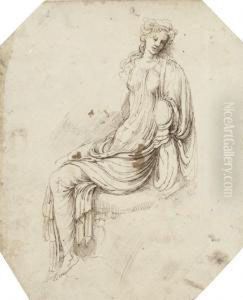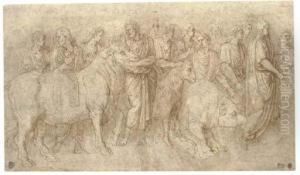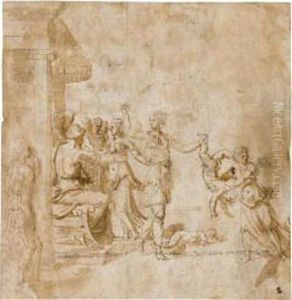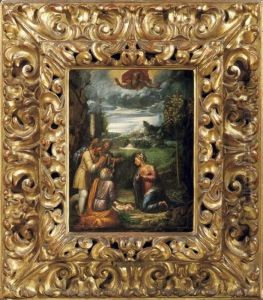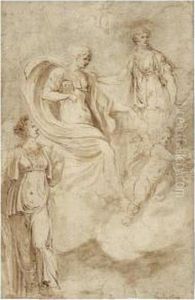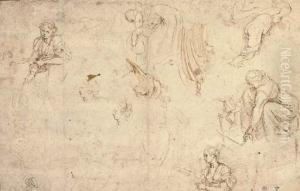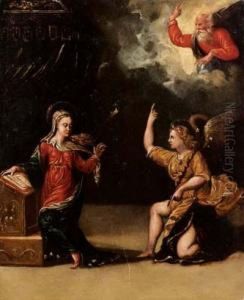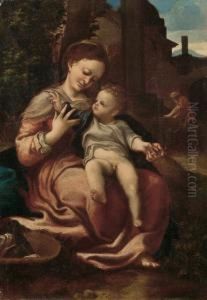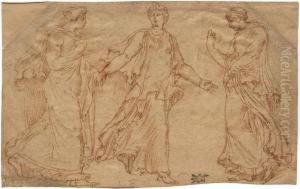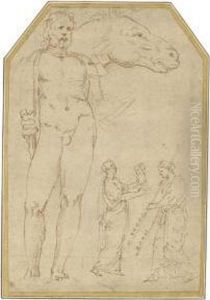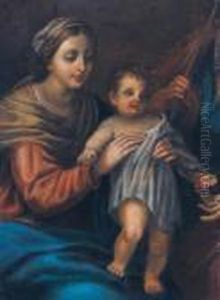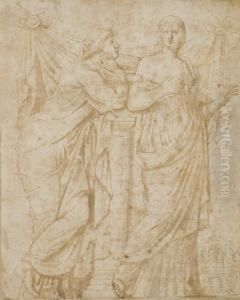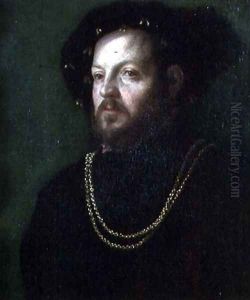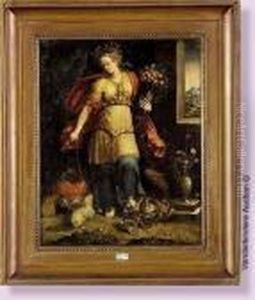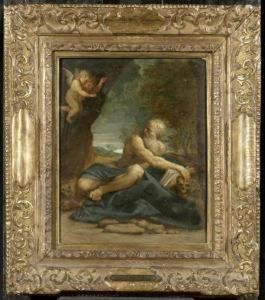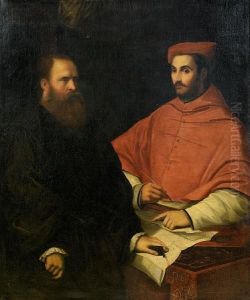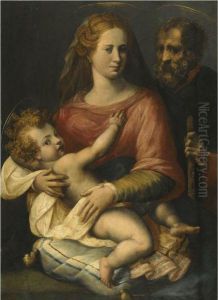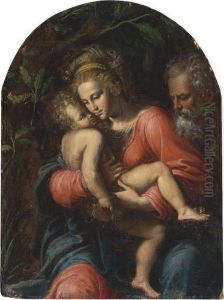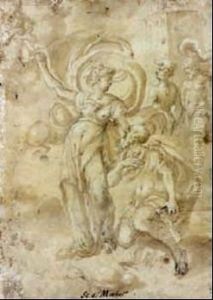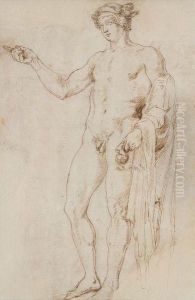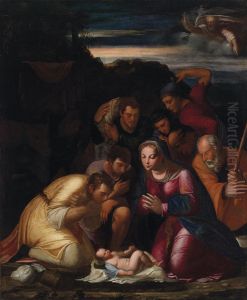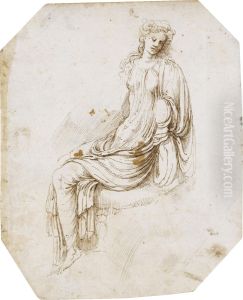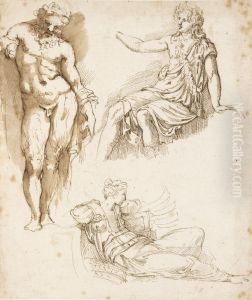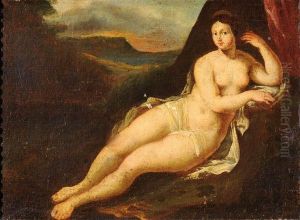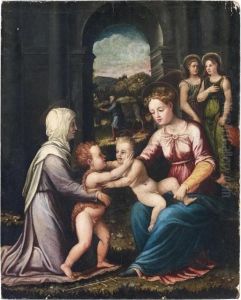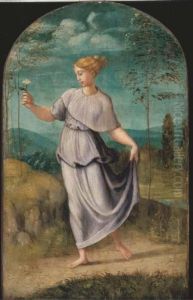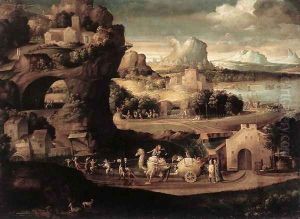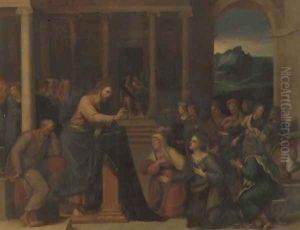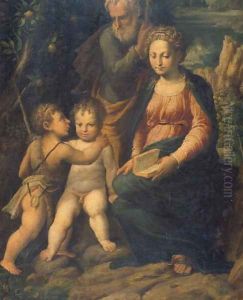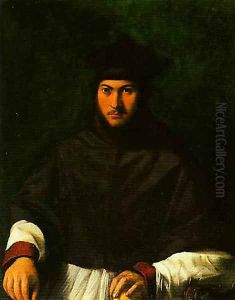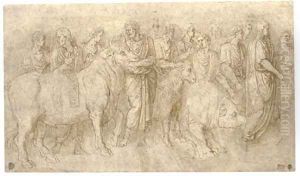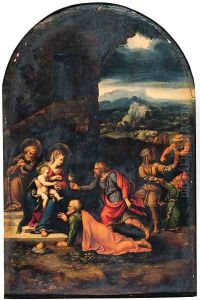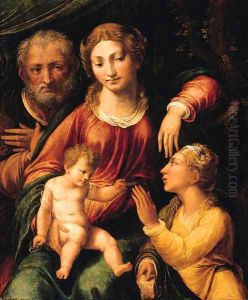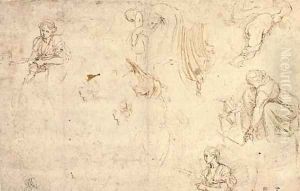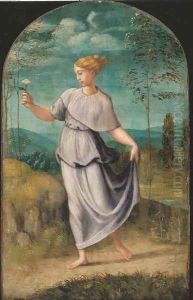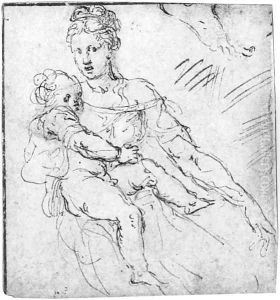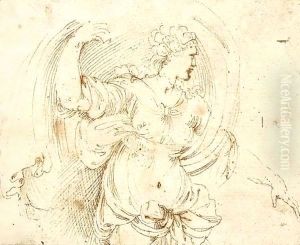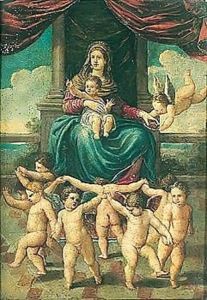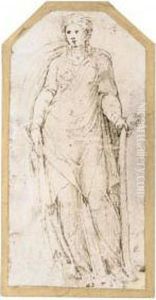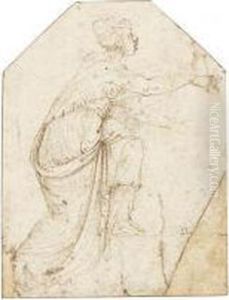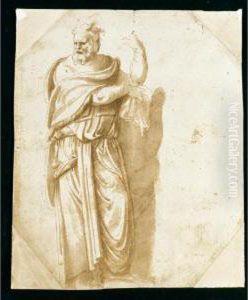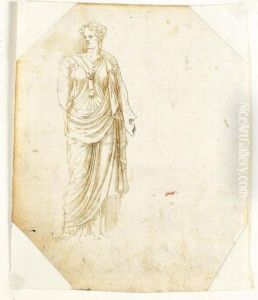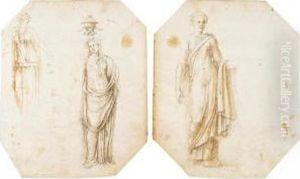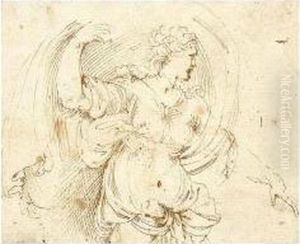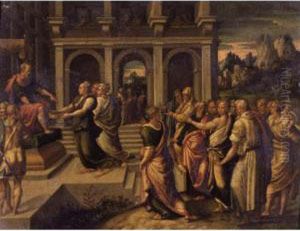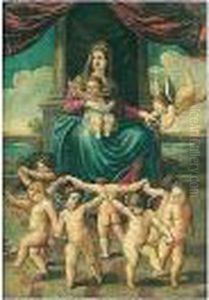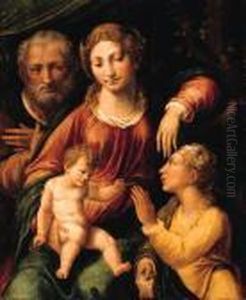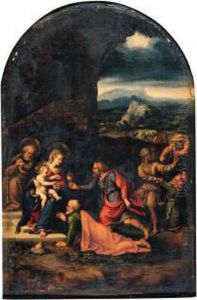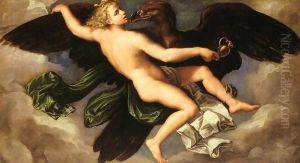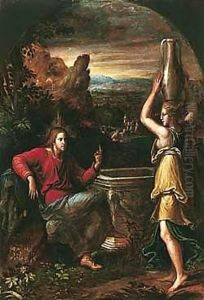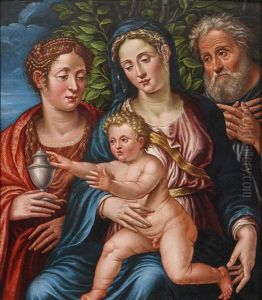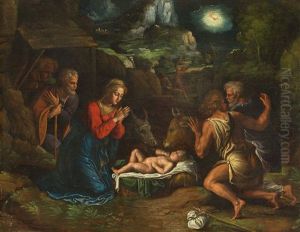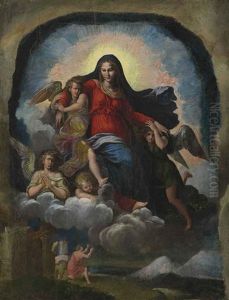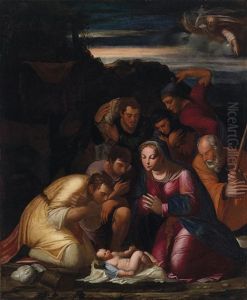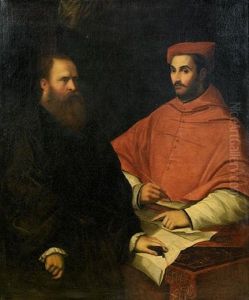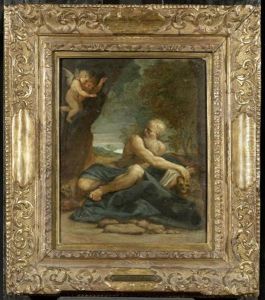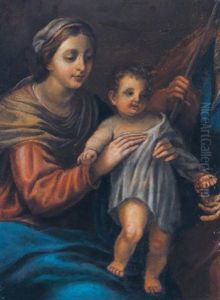Girolamo da Carpi Paintings
Girolamo da Carpi was an Italian painter and architect of the Renaissance period, active mainly in his hometown of Ferrara and in Bologna. He was born in Ferrara in 1501, into a family with artistic connections, as his father was a painter and his mother was related to the prominent artist Lorenzo Costa.
Girolamo initially trained with his father, but his skill soon surpassed the local standard, and he went on to study the works of leading Renaissance artists such as Raphael and Giulio Romano. His early works were influenced by these masters, blending the High Renaissance style with the Mannerist tendency that was becoming popular in the mid-16th century.
In his career, Girolamo worked on both religious and secular projects, painting altarpieces, portraits, and mythological scenes. He was also an accomplished draftsman and printmaker. Some of his notable works include decorations for the Palazzo dei Diamanti in Ferrara and frescoes in the Delizia di Belriguardo, a Renaissance villa.
Girolamo da Carpi also contributed to the architectural landscape of Ferrara. He designed several palaces and was involved in the construction of the city's fortifications. His architectural style was marked by a harmonious blend of classical elements with the Renaissance aesthetic.
Despite his considerable contributions to the arts, Girolamo's fame was somewhat eclipsed by more prominent figures of his time, and his works were often attributed to other artists. Nevertheless, his talent as both a painter and an architect has been recognized by art historians, and his works are considered important examples of the transition from High Renaissance to Mannerism.
Girolamo da Carpi's career spanned a period of significant change in the arts, as the harmonious proportions and balance characteristic of the High Renaissance gave way to the more expressive and dynamic compositions of Mannerism. Girolamo's work reflects this transition, and his legacy lies in his ability to integrate these evolving styles into his art. He passed away in 1556, leaving behind a body of work that continues to be appreciated for its contribution to the Italian Renaissance.
